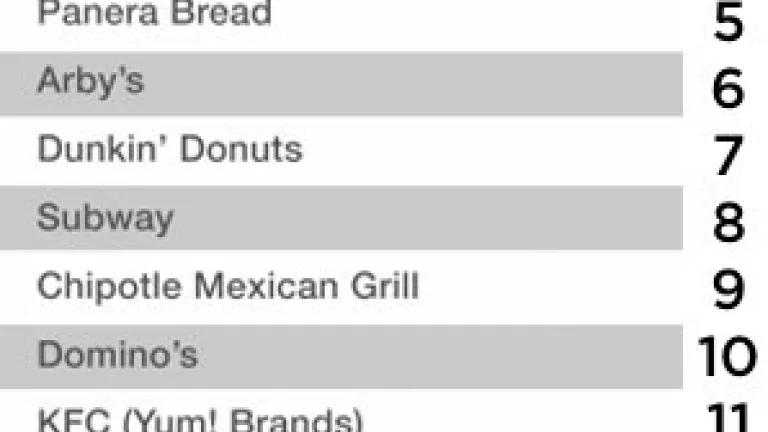
This week, we have yet another sign that consumers are paying close attention to food sourcing at their favorite restaurant chains: a new report by the American Customer Satisfaction Index, which scores customer satisfaction at fast food restaurants. Restaurants chains in the survey were evaluated based on a number of factors, including product quality, customer service, and perceived value. But what’s noteworthy to those of us that have spent years campaigning to end the routine use of antibiotics in the livestock industry is that 10 of the 18 chains evaluated in the report have now made some public commitment to antibiotic stewardship in their meat and/or poultry supply chains (though crucially, most chains have yet to implement those commitments or extend them to all the meat they serve). This list includes top performer Chick-fil-A, as well as Papa John’s, Panera Bread, Subway, Chipotle, Pizza Hut, Taco Bell, and McDonald’s.
Last year, NRDC and our co-authors released a first-of-its kind scorecard ranking America’s largest 25 fast food and fast casual restaurant chains on their meat and poultry antibiotics policies. Our 2015 “Chain Reaction” report received widespread coverage in dozens of mainstream outlets including CNN, Washington Post, USA Today, Los Angeles Times, Christian Science Monitor, Fox News, TIME, Civil Eats, BuzzFeed, Mother Jones, Reuters, and VICE News—a testament to how concerned American consumers are about antibiotics use in the systems in which the chickens, pigs, cows, and turkeys that end up on their plates are raised.
In 2015, all but 5 companies received F’s. But since the scorecard’s release, an increasing set of leading restaurant chains have taken action on antibiotic stewardship. Some like Subway and Yum! Brands—parent company to well-known restaurant chains like Kentucky Fried Chicken, Taco Bell, and Pizza Hut—were prodded along by rowdy consumer-driven corporate campaigns demanding change.
The actions of these companies prove that change is possible, even at a large scale. And they are being rewarded by their savvy customers, who every day are learning the alarming facts about antibiotics use in the meat industry and its contribution to the major public health threat of antibiotic resistance.
In the U.S., a whopping 70% of antibiotics important for human medicine are sold for use in livestock, not for human medical use. And the volume of medically-important antibiotics sold for use in livestock continues to rise: it has gone up 23% in just the last 5 years. These drugs are often given to animals that are not sick, either to speed weight gain or keep animals from getting sick in crowded, stressful and dirty conditions common in much of the meat industry. Approximately 96% of the antibiotics sold for animal use are added to feed and water, the preferred way to deliver antibiotics to large flocks or herds of animals at the same time. This practice is a key contributor to the rise of antibiotic resistant bacteria, which can escape the farm and spread into communities through air, water, soil, meat, and even workers. Whether or not you eat meat, when resistant bacteria breed and spread and antibiotics become less effective when we get sick, we're all at risk.
The tide is shifting, but there’s a lot more work to be done. Most meat served by America’s top restaurant chains still comes from animals raised in industrial-scale facilities where they are routinely fed antibiotics. But by making a firm, time-bound commitment to phase out routine antibiotics use in their meat and poultry supply chains, these large meat buyers can be part of the solution—and improve their customer satisfaction.
Stay tuned for the results of this year’s industry scorecard, due out September 2016, to see how your favorite restaurant chain ranks!



